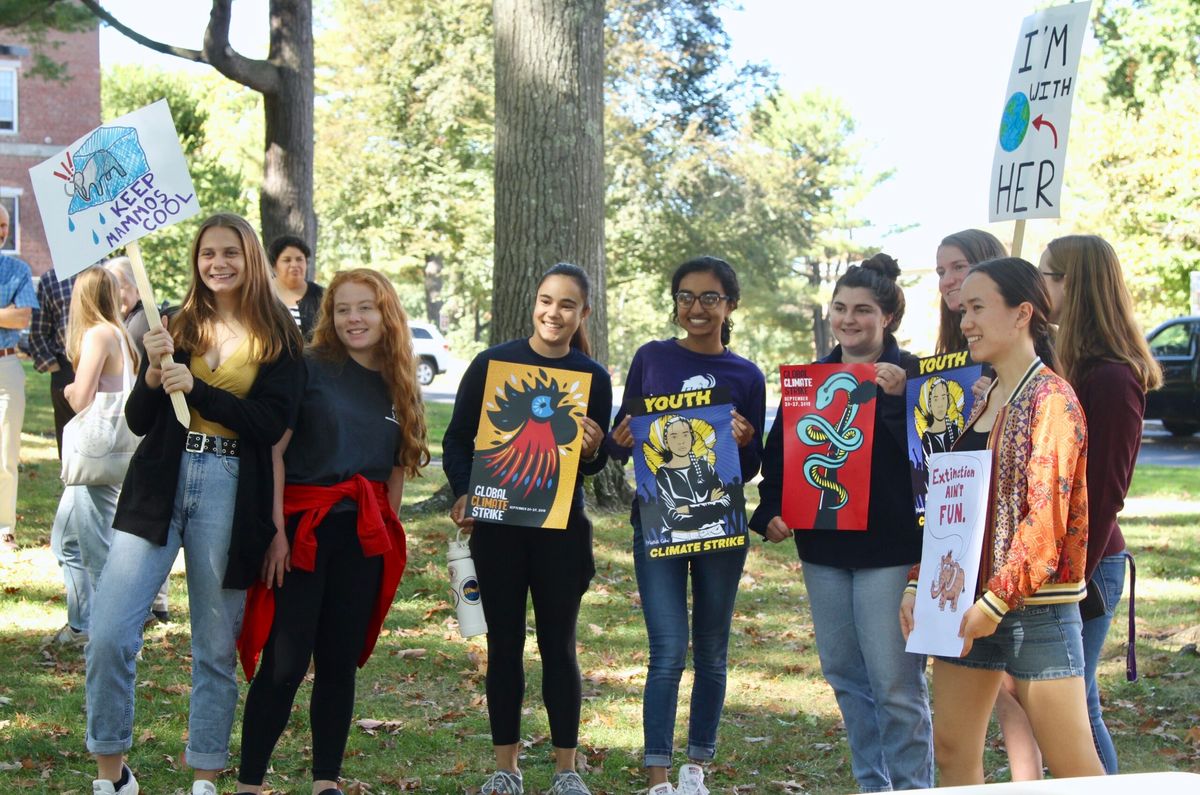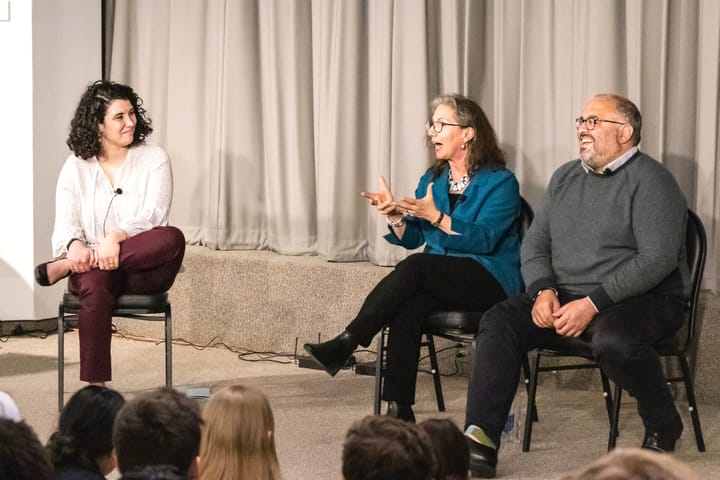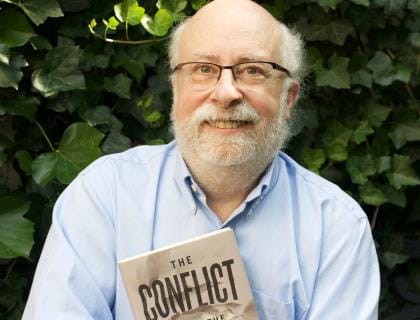Climate Action Plan Prepares for Development Phase

Nine months after the Board of Trustees approved the Climate Action Plan (CAP) — which includes a commitment for the college to reach carbon neutrality by 2030 — the CAP has received renewed attention in light of climate strikes on campus last Friday, during which a number of speakers discussed the CAP at length. A closer look at the CAP reveals a mix of developments so far, plans to come and issues left unaddressed.
The Last Nine Months For a project as big as the CAP, Director of Sustainability Laura Draucker says natural concrete changes won’t come immediately. According to Draucker, the administration must work through multiple steps in the planning process before any tangible results can take place, including a systematic study of how current campus infrastructure can accommodate planned modifications. It is part of preparations by the Office of Environmental Sustainability (OES) and Facilities in the last few months.
“As you can imagine, the CAP is a major project — one of the largest the college has undertaken. The campus operations team has already been busy preparing for several initiatives they’ll perform this winter to collect data that is crucial for us to understand what will be needed to update our buildings to operate under the new energy system,” said Draucker. “That will include an infrared analysis of building heat loss and empirical testing to determine the water temperatures needed to efficiently heat our buildings.”
For Draucker and her team at the OES, a large portion of time was also spent formalizing the ideas of the CAP in a written plan accessible to the general public, while also developing the CAP further in areas like student engagement.
“When the approval [of the CAP] was announced, we had everything in a PowerPoint presentation, but we didn’t really have a plan written down,” said Draucker. “So, we spent a lot of time writing the plan … making sure all the details were captured of how we went through the process of determining the plan and what the key steps are.”
“The CAP plans to have committees consisting of faculty, staff and students with the objective of overseeing its various aspects,” added Kevin Zhang ’21, a former OES intern. “I think that is a great way for students to get more involved with decision-making on campus and form connections with staff and faculty.”
Currently, members of the campus operations and finance teams are deciding between three firms which they interviewed this past week “for the task of leading the next phase of the project.” According to Draucker, the coming phase of the CAP involves “developing a conceptual design, which would include a timeline and implementation plan.” Draucker said they wanted to start “this phase of the work in November of this year and finalize it by next fall.”
The campus has seen some results, however. Witter Swanson ’21, an intern for the OES this past summer, pointed to “a solar energy facility in Maine that Amherst is involved in” as a specific example of the college’s continued move to renewable energy. “It’s going to provide about 50 percent of [the college’s] purchased electricity,” he said. “We banded together with other colleges — Bowdoin, Williams, Hampshire, Smith — to increase our marketability and impact … In the way that Amherst went about participating in the solar purchase, they went above and beyond what I’ve seen other colleges do.”
What Will Come Although much of the CAP is still in its planning phase, many of its details have already been decided. Most notably, the college will switch from a steam-powered heating and cooling system to a low-temperature hot water alternative, allowing for a transition from the current system, which uses natural gas, to a joint geothermal-electric energy system that uses renewable sources.
“The most consistent and key step in all of this work is switching from steam to hot water [as a heat distribution system],” said Draucker. “You really only have one way the create steam and that’s through burning fossil fuels, burning a biomass or nuclear fission — something which we’re not going to do on campus … So once you switch your campus to a hot water system, then you open up a ton of possibilities [with renewable energy].”
The specific logistics of how that will unfold, however, are currently up in the air. According to Draucker, each school handles the process differently due to the individual designs and environments of each institution. As such, the college won’t know the exact schedule by which the implementation will take place until the diagnostics and the first phase are finished.
“One of the firms we interviewed that is actually doing this work for Smith gave us a preview of what Smith’s phases look like. However, they were very clear with us that our phases will look different because it depends on the full analysis they would do,” Draucker said. “Everybody has done it slightly differently.” Smith announced in 2010 that it will aim for carbon neutrality by 2030.
Outstanding Issues Despite enthusiasm from climate activists on campus for the CAP, some are still dissatisfied with the college’s approach to environmentalism in other areas. In particular, the college’s investments in fossil fuels are a particular source of concern.
The Student has confirmed that the college currently maintains its investments in fossil fuels, as well as holdings in some of the largest oil and gas companies in the U.S. Though the administration and the board have been actively working toward releasing these investments, the process has taken a longer time than many hoped, and with little notice to the public. Across the board, however, it is recognized that divesting is complicated and involves legal terms and contracts that cannot guarantee resolution by set deadlines.
“Amherst’s endowment is a mix of direct investments, where managers purchase and hold securities in the name of the college, and indirect investments, where managers purchase securities in a commingled fund of which Amherst is one of many investors,” Simon Krinsky, chairman of Amherst’s Investment Committee, said in a statement to The Student. “The Investment Committee engages with all of our managers, those who invest directly for the college and those who invest more broadly, to ensure that each incorporates sustainability considerations into their analysis of companies and events. We are committed to only invest with managers who do so thoughtfully, consistently, and to our high standards.”
“Virtually all of the college’s energy exposure, from fossil fuel to renewable resources, is through these commingled funds today,” Krinsky said. “The mix of exposures in the endowment has changed meaningfully over the past decade away from fossil fuels and toward renewables, and while it is not possible to predict a date when the college will have no exposure to fossil fuels, our best estimate is that the college’s renewable energy exposure will surpass its fossil fuel exposure by 2025.”
Though students have called on the Board of Trustees to divest from fossil fuels throughout President Biddy Martin’s tenure at the college, the CAP only addressed a commitment to moving from fossil fuels to renewable energy on the college campus.
“I’m personally in favor of divestment from fossil fuel companies,” Swanson said. “I know there’s a lot of complications with that, and the effectiveness of that is debatable, but I think, on moral grounds, it feels wrong to be invested in fossil fuel companies, especially given the CAP, too.”
Swanson and Zhang both expressed a desire for an increase in focus on student engagement, which they saw as necessary for the CAP to go “beyond carbon neutral.”
“If we are able to create the next generation of climate-action-minded leaders, who will go on to have major influences in whichever field they end up in, then the impact that they have on the climate crisis will far outweigh our campus’s own carbon neutrality,” Zhang said. “The CAP already does contain an educational goal. However, I believe that significantly more emphasis should be put on it, which is where student voices come in.”
Shawna Chen ’20 contributed reporting to this article.





Comments ()